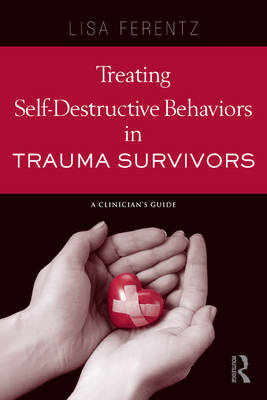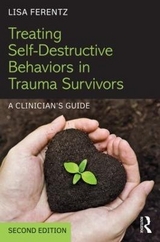
Treating Self-Destructive Behaviors in Trauma Survivors
Routledge (Verlag)
978-0-415-88784-7 (ISBN)
- Titel erscheint in neuer Auflage
- Artikel merken
Arguing that standard safety contracts are not effective, the book introduces viable treatment alternatives, assessment tools, and new ways of understanding self-destructive behavior using a strengths-based approach that distinguishes between the "experimental" Non-Suicidal Self-Injury (NSSI) that some teenagers occasionally engage in, and the self-destructive behaviors that are repetitive and chronic. It also explores a cycle of behavior and uses case studies to show clinicians how to personalize the cycle with clients and form a template for treatment. In its final sections the book focuses on counter-transferential responses and the different ways in which therapists can work with self-destructive behaviors and avoid vicarious traumatization by adopting tools and strategies for self-care.
Part I: It Makes Sense Given where They’ve Come from. Towards a New Understanding of Self-destructive Behaviors. Working with Trauma Survivors: The Strengths-Based Approach. The Role of Attachment. The Inherent Struggles of Adolescence. The Meta-communication of Eating Disorders, Addictions, and Self-mutilation. Part II: Understanding and Working with Self-Destructive Behaviors. The Cycle of Self-Harm. The Triggering Event and the Loop of Negativity. Unbearable Anxiety and the Frozen Loop. Self-Injury, Positive Outcomes, Negative Outcomes, and Emotional Vulnerability. Treatment: Identifying Intervention Sites and Working with the Triggering Event. Working with the Cycle: The Loop of Negativity. Working with the Cycle: Unbearable Anxiety and the Frozen Loop. Working with the Cycle: Self-Injury and CARESS. Working with the Cycle: Positive Outcomes, Negative Outcomes, and Emotional Vulnerability. Part III: Helping Others While Taking Care of Ourselves. Focusing on Us. Creating a Sense of Internal and External Safety. Assessing Your Agenda. Being Clear About Your Control Issues. Holding Appropriate Boundaries. Understanding Your Triggers. Acknowledging Your Vulnerabilities. Pacing the Sessions. Debriefing After Difficult Sessions. Understanding the Correlation Between Family-of-origin and Workplace Dynamics. Striving for Balance in Your Life. Giving Yourself Permission to Get Supervision or Refer Out. Practicing What You Preach. Strengthening Your Work.
| Zusatzinfo | REPLACE ABOVE IN SECOND PRINTING; 3/12 - NEW DISCLAIMER & PGS 16 & 153 -; 1 Illustrations, black and white |
|---|---|
| Verlagsort | London |
| Sprache | englisch |
| Maße | 152 x 229 mm |
| Gewicht | 432 g |
| Themenwelt | Geisteswissenschaften ► Psychologie ► Biopsychologie / Neurowissenschaften |
| Geisteswissenschaften ► Psychologie ► Klinische Psychologie | |
| Geisteswissenschaften ► Psychologie ► Persönlichkeitsstörungen | |
| Medizin / Pharmazie ► Medizinische Fachgebiete ► Psychiatrie / Psychotherapie | |
| Sozialwissenschaften ► Pädagogik ► Sozialpädagogik | |
| Sozialwissenschaften ► Soziologie | |
| ISBN-10 | 0-415-88784-4 / 0415887844 |
| ISBN-13 | 978-0-415-88784-7 / 9780415887847 |
| Zustand | Neuware |
| Haben Sie eine Frage zum Produkt? |
aus dem Bereich



